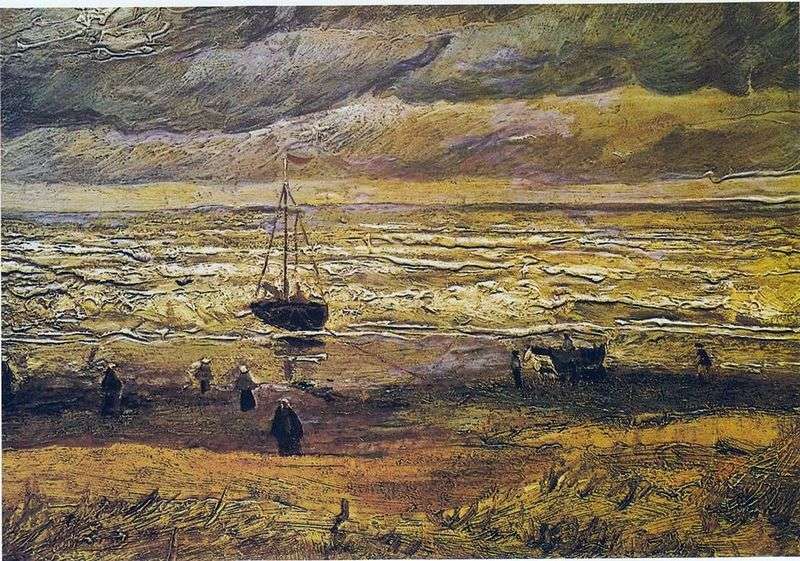
In 1881, Van Gogh began to take painting lessons from his distant relative, the artist Anton Muave. Then it was clear that the training should start with the drawing. Van Gogh was allowed to work with paint only after he has achieved sufficient accuracy in the image of objects.
One of the first picturesque works, made from nature, was this landscape. On it, Van Gogh depicted the sea in Scheveningen during the storm. Van Gogh had to write it in difficult conditions, when gusts of wind raised a lot of sand from the ground and literally knocked the artist off his feet.
So I had to write quickly, immediately grasping everything that needs to be depicted. Quickly sketching a general view, Van Gogh tried to finish the work in the first refuge. From the storm in the colorful layer of the picture were grains of sand, which later had to be removed from there.
Given such difficult conditions of creation, this picture can be called quite a masterful work. Van Gogh tried as accurately as possible to convey the state of nature, depicting heavy gray clouds, low hanging over the water. Because of the clouds trying to break through the sun, leaving on the waves glittering glare. Such complex lighting turns the figures of people and boats into dark silhouette spots. Katina looks almost monochrome, only the golden shore in the foreground is knocked out from the general gray-green scale.
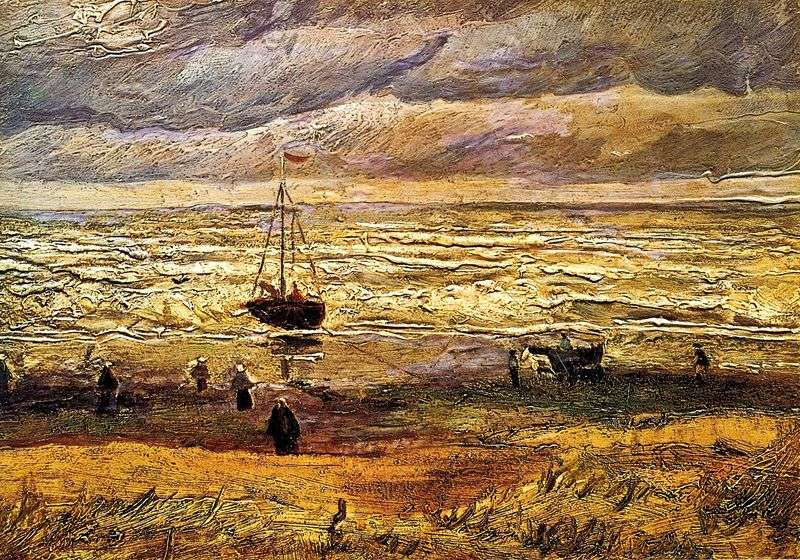 Beach in Scheveningen by Vincent Van Gogh
Beach in Scheveningen by Vincent Van Gogh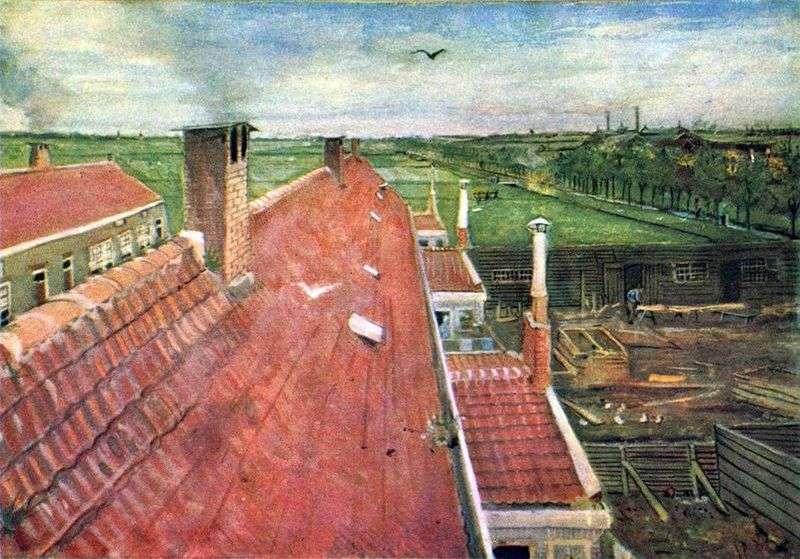 Roofs. View from the workshop by Vincent van Gogh
Roofs. View from the workshop by Vincent van Gogh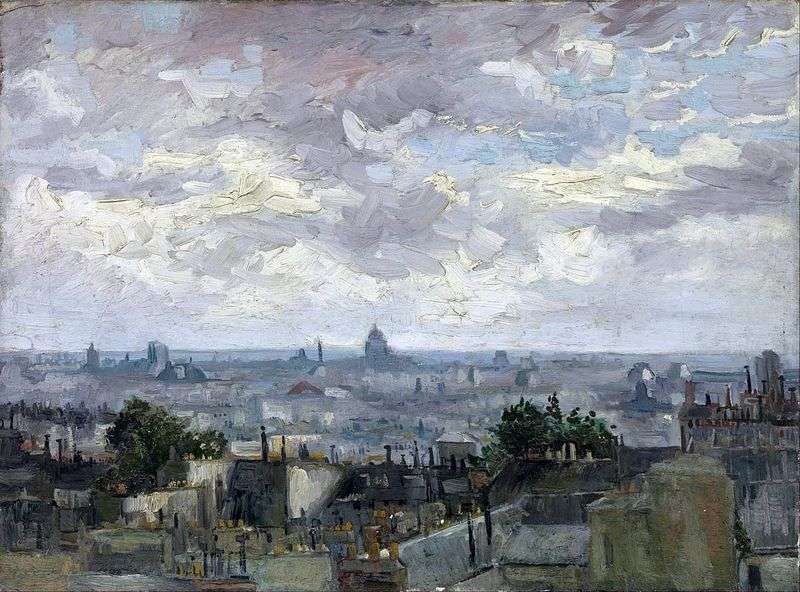 View of the rooftops of Paris by Vincent Van Gogh
View of the rooftops of Paris by Vincent Van Gogh Vue sur la mer à Scheveningen – Vincent Van Gogh
Vue sur la mer à Scheveningen – Vincent Van Gogh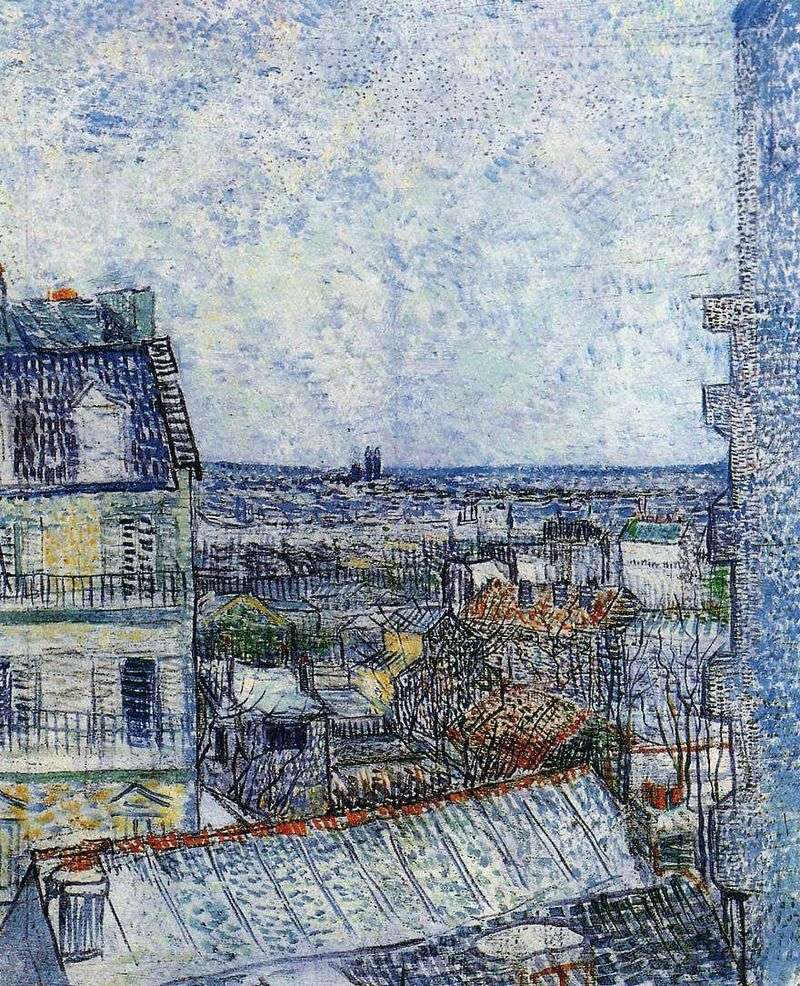 View of Paris from Vincent’s Room at Rue Lepic II by Vincent Van Gogh
View of Paris from Vincent’s Room at Rue Lepic II by Vincent Van Gogh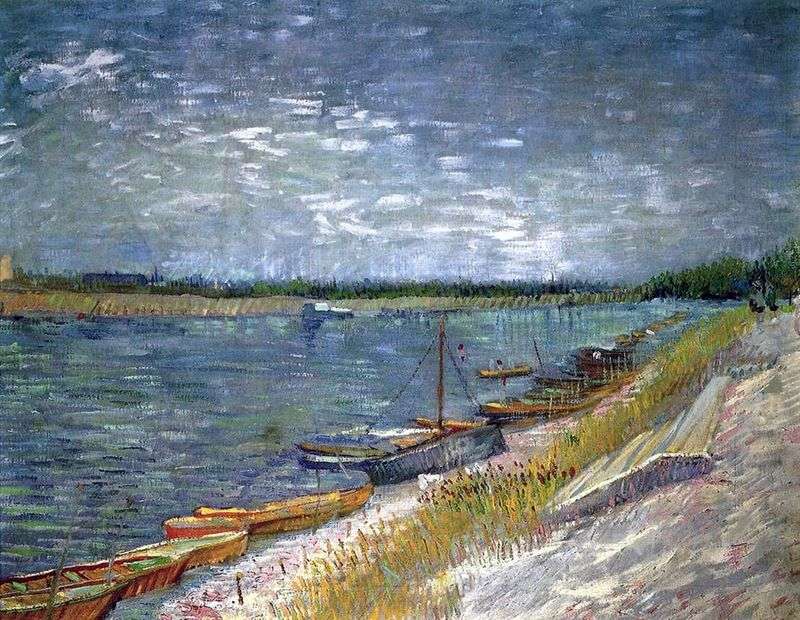 View of the river with fun boats by Vincent Van Gogh
View of the river with fun boats by Vincent Van Gogh View of Over by Vincent van Gogh
View of Over by Vincent van Gogh View of the Over and the Church by Vincent Van Gogh
View of the Over and the Church by Vincent Van Gogh